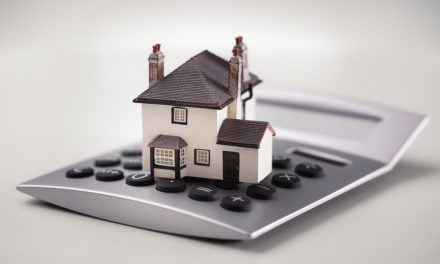This article introduces the concept of carryback financing and presents the various forms of documentation and risks involved.
Seller financing supports the price
Most real estate sales involve the financing of some portion of the purchase price. During economic periods of plentiful and inexpensive mortgage money, the financing needed to fund the purchase of real estate is provided by an institutional or private lender, or more likely a mortgage banker.
Seller financing, also called an installment sale or credit sale, involves carrying back a note for that portion of the price remaining unpaid after the initial down payment. Under most circumstances, the note will be secured by a first or second trust deed on the property being sold.
Thus, the carryback seller takes a secured creditor’s position in the property, comparable to that of a mortgage lender. On closing, the legal rights and obligations of real estate ownership are shifted by the transfer to the buyer, while the carryback seller takes on the rights and obligations of a secured creditor.
Carryback financing offers considerable financial and tax advantages for both buyers and sellers of real estate when the installment sales transaction is properly structured.
The seller who offers a convenient and flexible financing package to prospective buyers makes his property more marketable and defers the tax bite. Qualified buyers are willing to pay a higher price for real estate if attractive financing is available, be it provided by the seller or a mortgage lender.
Even the most qualified buyer might agree to a higher price when he can defer payment of the price through financing provided by the seller, especially when the rate of interest on the carryback financing is competitive or below the rates lenders are charging on their purchase-assist loans.
Tax benefits and flexible sales terms
Taxwise, it may be preferable for the seller to carry back a portion of the sales price, rather than be cashed-out on the sale. The seller will be able to defer tax reporting of his profits on the sale, spreading the payment of profit taxes over a period of years and avoiding a premature tax bite on his profit in the year of the sale.
Finally, the seller should understand the tax impact of the interest he receives on carryback financing interest is portfolio category income. The seller converts his real estate equity into a note which generates a constant cash flow, rather than being cashed-out of his equity, paying taxes and reinvesting what remains of his diminished sales proceeds after the payment of taxes. The carryback note typically provides for a higher interest yield than is available on other investments with a similar level of risk. Additionally, the seller has a first hand knowledge of his security.
For buyers, seller carryback financing offers a moderate down payment, competitive interest rates, less stringent terms for qualification than those imposed by lenders and no origination costs.
Mortgage lenders typically require a minimum down payment of 20% for the buyer to avoid the additional burden of qualifying for private mortgage insurance (PMI). In a carryback sale, the amount of the down payment is negotiable between the buyer and seller without outside influences, such as the requirements of the secondary mortgage market pools and PMI underwriters, which mortgage brokers and borrowers must contend with.
Also, the buyer is able to negotiate a lower-than-market interest rate in exchange for agreeing to the seller’s higher-than- market asking price. However, the seller can have one or the other, but not both, if the buyer (or the buyer’s broker) is knowledgeable.
The varieties and variations of carryback financing
Seller financing is documented in a variety of ways, including land sales contracts, lease-option sales, sale-leasebacks and trust deed notes.
Legally, the note and trust deed is the most certain and universally understood of the various documents for structuring seller financing.
The carryback documentation consists of:
· a promissory note executed by the buyer in favor of the seller as evidence that a portion of the price remains to be paid for the real estate; and
· a trust deed lien on the property sold to secure the debt owed by the buyer as evidenced by the note.
The promissory note states the exact amount and terms for repayment of the debt the buyer owes to the seller. On the other hand, the trust deed is a lien on the property which acts as security for payment of the debt. The trust deed requires the buyer to maintain the secured property, and gives the seller the power to foreclose through a trustee’s sale should the buyer default on note payments or trust deed conditions.
The note and trust deed can be structured in regular or all-inclusive terms to meet the needs of the buyer and seller.
For instance, if the real estate is encumbered by a first trust deed which a qualified buyer can assume with the lender, the seller can carry back a regular note secured by a second trust deed for the balance of the seller’s equity which remains unpaid after deducting the buyer’s down payment.
However, if the existing loan is not assumable by the buyer, the buyer might arrange a new first trust deed loan to pay off the existing financing.
As with a buyer’s assumption of the existing loan, the seller can carry back a regular note for his remaining unpaid equity in the property and a trust deed to secure it, which is junior to the new lender’s trust deed.
If the seller’s borrowing power is greater than the buyer’s, the seller might refinance the existing loan on the property himself and draw out a portion of his equity by placing new conventional financing on the property which the buyer could then assume.
The buyer assumes the new loan and the seller carries back a regular note and junior trust deed for the remainder of his unpaid equity in the property.
Another alternative which reduces the seller’s risk of loss and defers more profit taxes than a regular second trust deed note, is the all-inclusive trust deed (AITD) note, called a wraparound security device. In an AITD carryback arrangement, the seller is secured by a junior trust deed lien on the property. However, the trust deed secures a note for a dollar amount equal to the balance of the entire purchase price remaining unpaid after the downpayment, not a regular note limited to the amount of equity remaining unpaid after the down payment.
Thus, the AITD “wraps” the senior financing by including the dollar amount of the first trust deed in the principal amount of the AITD note. The buyer makes payments to the seller on the AITD note. In turn, the seller continues to remain responsible and make payments on the senior loan out of the buyer’s payments received on the AITD.
Carryback risks
A carryback seller must be aware he takes on the role of a lender in a carryback sale, with all the risks and obligations of a secured lender’s position.
Above all, the seller must be willing to accept the risk of default by the buyer. Should a default on installment payments occur, the seller could be forced to advance cash to make payments on the senior trust deed loan while he forecloses on the property in an effort to recover the amounts owed on the carryback note. Also, a risk of impairment to the security exists should the buyer default on trust deed provisions for the payment of taxes, assessments and insurance premiums.
Costs incurred in foreclosing and reselling the property can quickly turn a low-downpayment, high-interest-rate sale into a cash drain for the seller.
Also, the seller must understand a carryback note is nonrecourse paper. Thus, the seller will be barred from obtaining a deficiency judgment from the buyer for any part of the carryback debt not satisfied by a foreclosure sale. [Calif. Code of Civil Procedure §580b]
On a default by the buyer, the carryback seller could suddenly find himself returned to his original position — owning property he no longer wanted to own and still subject to the senior trust deed.
Further, the seller will incur out-of-pocket costs for:
· foreclosure;
· carrying the property;
· any reduction in property value or property taxes for reassessment;
· a modified (higher) interest rate on the old loan; and
· profit taxes on any untaxed principal in the down payment.
As with any creditor, if the premium in the price, down payment and interest rate on the carryback note are sufficient, the benefits of carryback financing outweigh the risks of loss.













